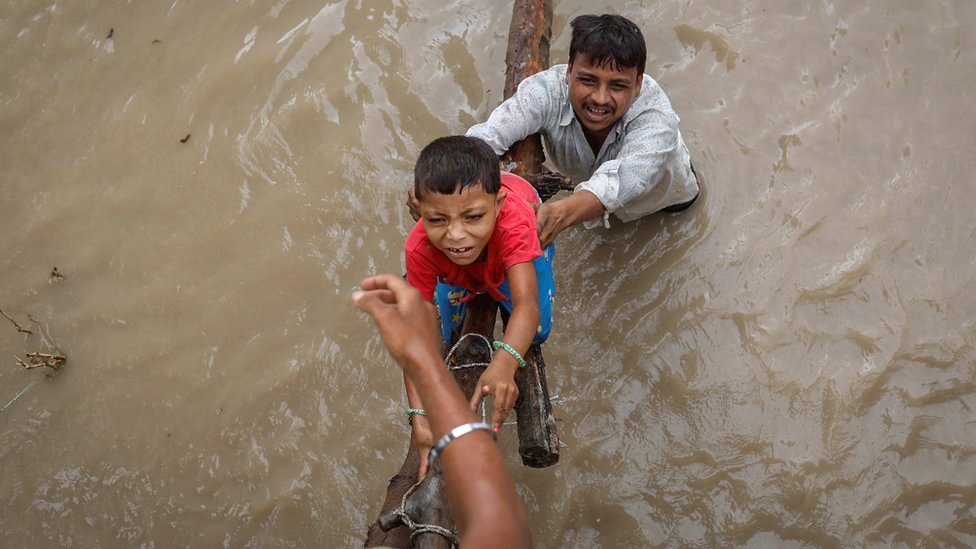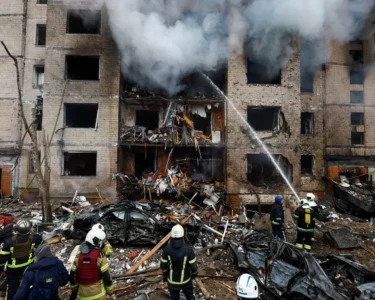In recent days, key roads in the Indian capital, Delhi, have been severely affected by flooding caused by the overflow of the Yamuna river. The water level of the river has been steadily rising since Wednesday, surpassing a record high mark not seen in over 45 years. This unprecedented situation has led to the evacuation of thousands of people from low-lying areas and the diversion of traffic from arterial roads. Northern India has experienced an exceptional monsoon season, with record-breaking rainfall causing widespread flooding and devastation. In this article, we will explore the current flood situation in Delhi, its impact on the city, and the measures being taken by authorities to address the crisis.
The Devastating Flood Situation
Unprecedented Water Level and Inundated Areas
The Yamuna river, swollen by the incessant rainfall, has reached a staggering water level of 208.46 meters, surpassing the previous day’s measurement of 207.49 meters. This marks the highest water level in over four decades, causing widespread flooding in low-lying areas. The deluge has inundated roads, with shocking videos circulating on social media depicting cars and buses submerged underwater. Local TV channels have reported the flooding of significant thoroughfares, including a key road leading to Connaught Place, a prominent business center in central Delhi.
Impact on Residential Areas and Infrastructure
The flooding has not spared residential areas either. Chief Minister Arvind Kejriwal’s residence is among the affected locations, with water encroaching on the surrounding streets. Furthermore, the crisis has compelled the closure of three water treatment plants in Delhi, exacerbating concerns over water scarcity. As a result, the Delhi government has implemented water rationing measures, anticipating shortages for a couple of days. To mitigate the situation, heavy vehicles, except those involved in essential services, have been barred from entering Delhi.
Immediate Response and Relief Efforts
Evacuation and Temporary Shelters
Recognizing the urgency of the situation, authorities have conducted large-scale evacuations, moving over 16,000 people to relief tents set up under flyovers. The Delhi government, in coordination with disaster relief teams, has been actively engaged in rescue operations to ensure the safety of affected individuals. Moreover, relief efforts are ongoing in flooded areas, with a focus on providing immediate assistance and aid to those in need.
Government Measures and Official Statements
Chief Minister Arvind Kejriwal, addressing the media, announced the closure of schools, colleges, and universities in the capital until Sunday. He also urged government employees, except those involved in essential services, to work from home. Private offices have received advisories recommending a similar arrangement. Mr. Kejriwal acknowledged the challenges posed by the flood-like situation and emphasized the necessity of water rationing during this critical period.
READ MORE:
A Heatwave Sweeping Across Southern Europe and North-West Africa
Coordination with Federal Authorities
In response to the crisis, Chief Minister Kejriwal has sought the intervention of the federal government. He appealed for measures to control the release of water from the Hathnikund Barrage in Haryana, as he believes it is contributing to the swelling of the Yamuna river. Authorities have assured that the flow of water from the barrage will begin subsiding by 14:00 IST (08:30 GMT) on Thursday, offering hope for some respite in the flooded areas.
Climate Change and Flooding in India
Monsoon Rains and Extreme Weather
India heavily relies on seasonal monsoon rains, which provide crucial nourishment for agriculture and ecosystems. However, these rains also bring about the annual challenges of floods, property damage, and unfortunately, loss of life. In recent years, the country has witnessed increasingly extreme weather events. This year’s monsoon season follows closely on the heels of an intense heat wave that affected northern India.
Link to Climate Change
Experts point to climate change, specifically global warming, as a significant contributor to the increased frequency and intensity of extreme rainfall. The warming of the planet alters atmospheric patterns, leading to unpredictable weather phenomena. The combination of rising temperatures and changing rainfall patterns amplifies the risk of severe floods, placing vulnerable regions like India in a precarious situation.




